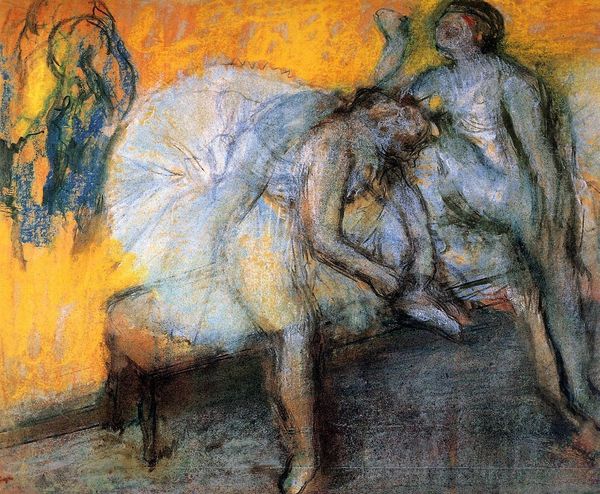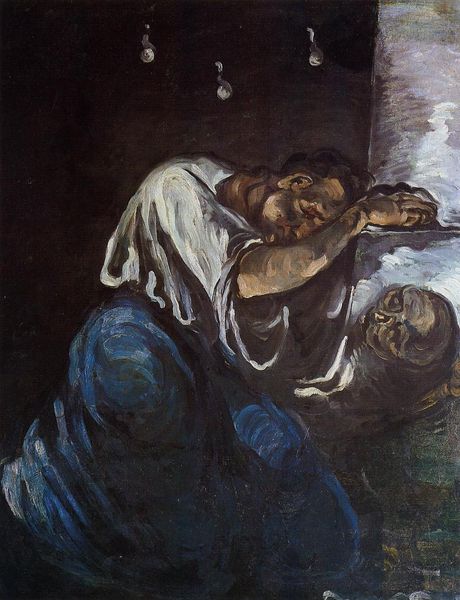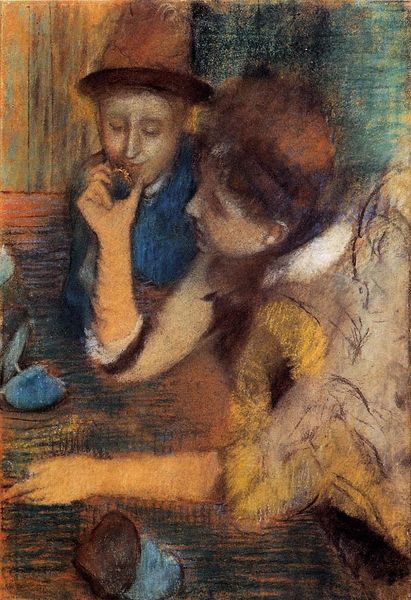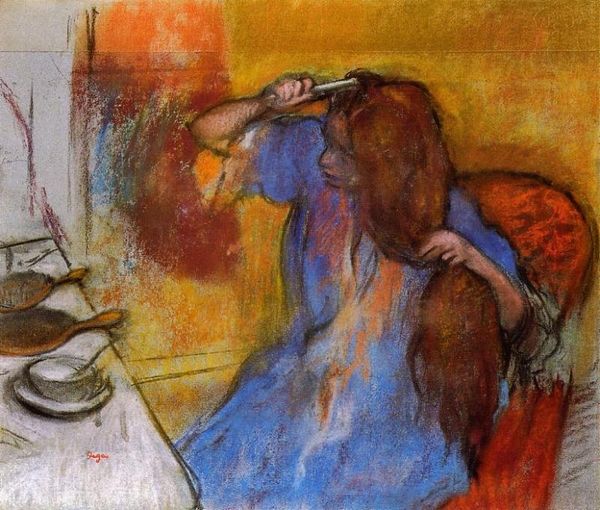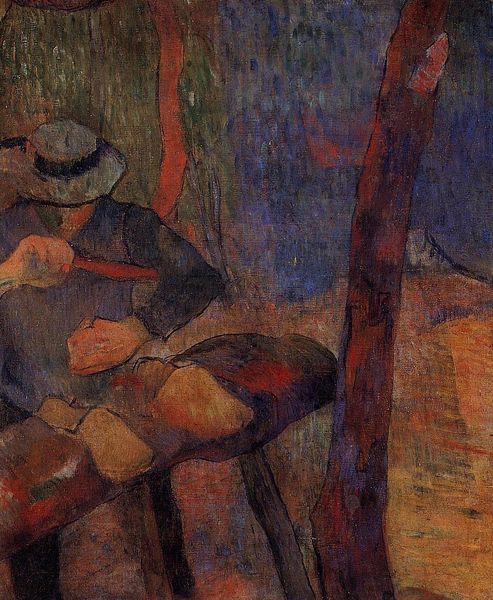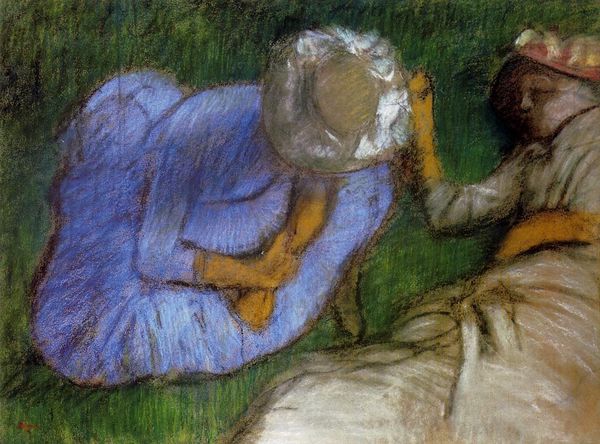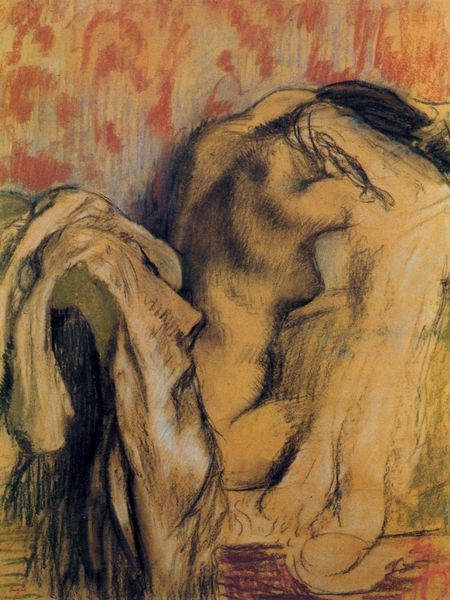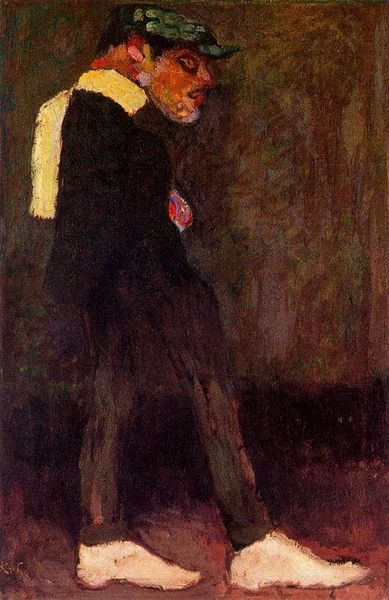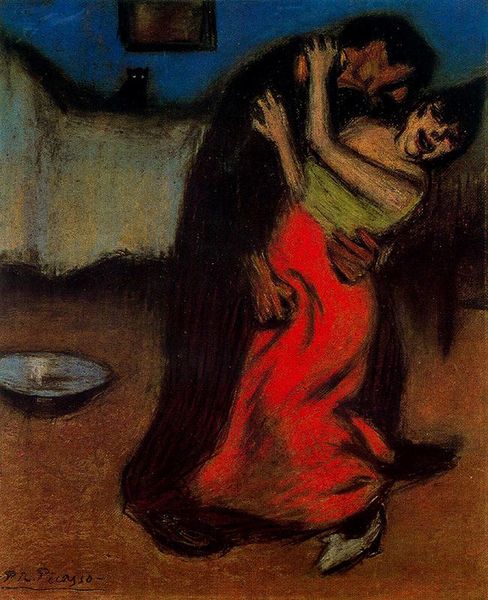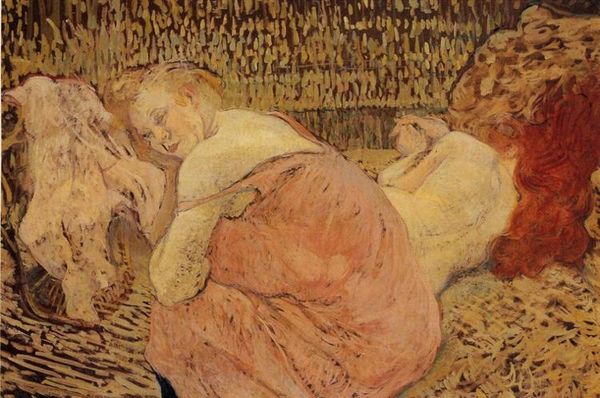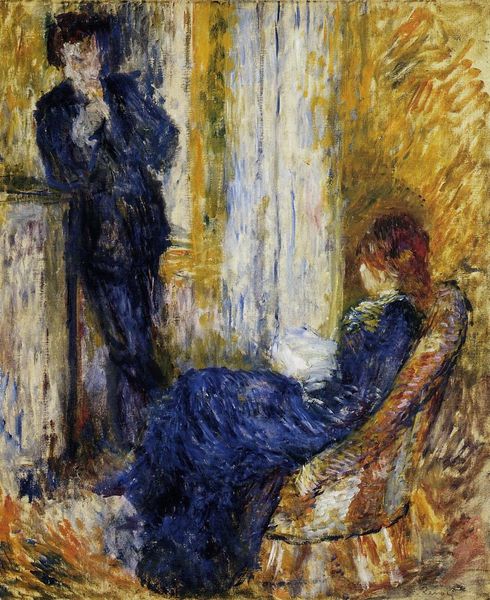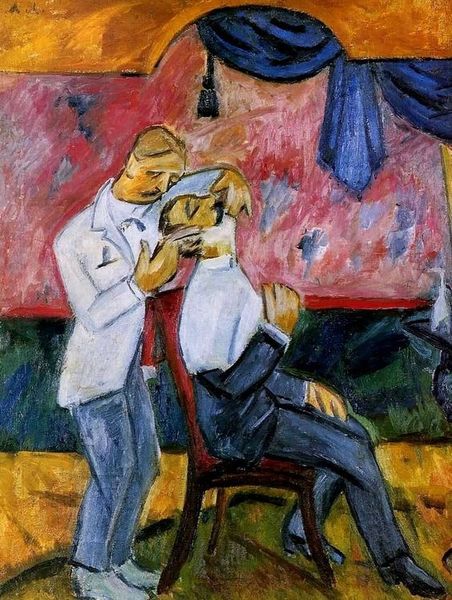
drawing, pastel
#
portrait
#
drawing
#
impressionism
#
charcoal drawing
#
oil painting
#
pastel
#
realism
Copyright: Public domain
Curator: Edgar Degas’s pastel drawing, "The Milliner," created in 1882, presents a seemingly private moment of labor and contemplation. Editor: It's a striking image. The muted colors—primarily blues, browns, and oranges—create a somewhat melancholic mood. It’s a more intimate scene than what we usually associate with Degas’s portrayals of dancers, don't you think? Curator: Absolutely. Degas's choice of pastel is key here. Pastel, with its immediacy, lacks the constraints and pretensions of traditional painting, thus serving to de-romanticize her labor. As opposed to his famous dancers, she isn't depicted onstage but is seen during her backstage moment, as it were. We also can think about what it means to represent her at the "moment of the labor." She's working but not, as her pose suggests. This drawing, made around 1882, places a spotlight on the social and economic dynamics of late 19th-century France. Editor: And if you look closely, you can see the smudges of pastel across the paper. It's interesting to consider this material quality within the context of artisanal work: her labor creating hats for a predominantly bourgeois clientele in Paris at the end of the century. She, like Degas, worked in and among the fashion-obsessed crowds and trends. Curator: Precisely, and the pastel as material echoes the transient nature of fashion. Let’s not forget that these are women negotiating the realities of a rapidly changing social landscape, who are now becoming consumers and participants in the capitalist landscape of modern life, while they simultaneously try to climb it. What is "backstage" and the stage here? This moment reflects broader dialogues of the art world about female autonomy and the complexities that characterized these roles. Editor: Thinking about the artisanal element – that element of crafted labor made to serve the demands of consumers of high art, it forces us to reflect on the social dimensions of fashion. Degas does seem to want us to think about class in these private depictions. Curator: Absolutely. By decentering his subjects, we are confronted with questions of female labor. As we analyze not just "art" and aesthetics, we also explore themes like gender and class consciousness, too, especially within the setting of modernity. Editor: Thanks to its intimate gaze and subtle use of color and material, Degas encourages a reconsideration of beauty and a greater recognition of labor. Curator: Indeed, Degas shows how identity and context intertwine.
Comments
No comments
Be the first to comment and join the conversation on the ultimate creative platform.
